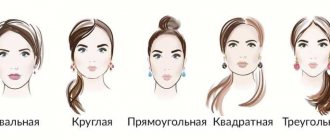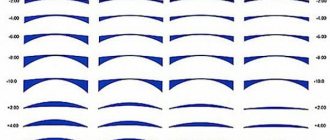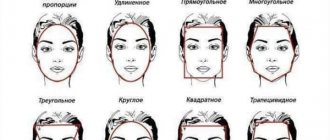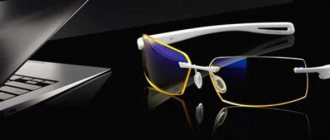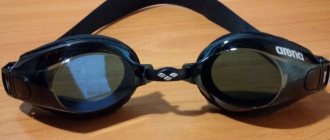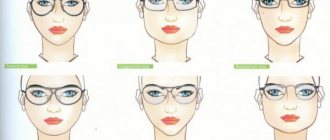Choosing glasses, be they optical or sunglasses, is by no means an easy task, even if you have the opportunity to try on the product in front of a mirror and listen to the opinions of others. But what if you buy glasses online? As you might guess, in this case the task becomes much more complicated. Of course, there will be those who say: “What’s the point of buying such a product without trying it on? After all, we don’t live in an era of shortages—there are dozens, if not hundreds, of traditional stores.”
Of course this is a weighty argument. But what if you are offered to buy magnificent branded glasses in a good, trusted foreign online store not for $200-400, but let’s say for $60-100? Brand new, with 100% originality guarantee? It's worth thinking about. What if this store can offer a colossal selection, including new items from the latest collections?
It seems that these arguments can convince even the most indifferent to online shopping. What's the point of buying a piece of Chinese plastic on a foldout for $50 if for that money you can afford Ray-Ban, Prada or Fendi? What's the point of paying $200 for a frame without a family when you can buy a Tiffany, Carrera or Cartier frame for that amount? If the prices seem unrealistic to you, just read the purchase reports published on our website. And don’t forget that when purchasing glasses in an online store, you are by no means buying a “pig in a poke.” By following simple recommendations, you minimize the risk of getting something that is not what you expected and being left disappointed.
Glasses size
If you take any glasses, in most cases you will find on the inside of the left temple the size, which is usually indicated after the brand. Sometimes it is printed on the bridge of the nose. This is the most important parameter from which you should start selecting glasses. It consists of three numbers separated by dashes or dots, sometimes a square is drawn after the first one. However, this does not change the essence.
The size, always indicated in millimeters, is: 52 – 18 – 135.
- 52 – lens width
- 18 – width of the bridge on the bridge of the nose (nose bridge distance)
- 135 – total length of the temple (temple length)
When selling glasses, be they optical, sunglasses or even sports glasses, the frame size can be indicated to enable the buyer to more clearly navigate. Having these dimensions, you can determine with almost 100% accuracy whether this or that frame will suit you or not. This size usually consists of 4 digits and looks approximately like this: 54-20-134-26.
- 54 – frame width, frame width
- 20 – bridge
- 134 – temple length
- 26 – frame height
What to remember when choosing your glasses size
- The size of glasses is not a dogma; it may well vary slightly, and when buying glasses it is not necessary to buy strictly “digit to number”. Allowable variations: for lens size: +/- 5mm, bridge width +/- 1 mm, temple length +/- 5 mm. Those. If glasses with sizes 52 - 18 - 135 suit you, then 47-19-130 will be quite suitable.
- You can always visit the nearest optician or salon - store, try on glasses there and simply write down the size that suits you best.
- One of the most important parameters of glasses is the overall width of the frame (frame width). If it is not indicated, it is quite possible to ask for it, just like other sizes. This is common practice, for example on eBay.com.
How to choose the right size
The easiest way is to rely on existing glasses, especially when it comes to corrective optics. Of course, provided that you feel comfortable with your current glasses.
If the size markings on the temple have worn off, you can measure the required parameters yourself using a ruler.
If you are buying your first glasses, it is better to use the help of an optical consultant, since some parameters cannot be determined on your own. For example, to select the optimal size of the bridge, you need to know the interpupillary distance, which is measured by an ophthalmologist. It is impossible to measure this indicator at home.
However, you can measure the overall width of the frame. To do this you will need two pencils, a ruler and a mirror. You need to tuck pencils behind your ears, stand in front of a mirror and measure the distance from the tip of one pencil to the tip of the other. This will be the value you need, which will become the starting point for choosing the appropriate glasses.
Permissible errors
The length of the temples and the width of the light opening can vary by approximately 5 mm in both directions. The variability in bridge sizes is noticeably less - no more than 1-2 mm.
The overall width of the frame can vary within 2-3 mm, but no more, otherwise you will experience discomfort while wearing glasses.
Shape of glasses
The choice of glasses shape is a purely individual matter. Everyone has the right to decide for themselves what suits them and what doesn’t. However, there are practical tips that are worth remembering. The main point when choosing the shape of glasses is the shape of the face. The classical canons look like this:
- For those with round faces, rectangular or square frames are more suitable.
- The oval face shape is considered universal; most frames will fit here.
- For those with a triangular face shape, it is preferable to go for rectangular frames.
- square and rectangular shapes are most organically combined with round or oval frames.
The classic aviator and wayfarer glasses are suitable for everyone in the vast majority of cases.
The official website Ray-Ban.com can greatly help you in virtually selecting the appropriate shape of glasses. It is here that, using the “Virtual Mirror” tool, you can put any shape of glasses on your face (namely, your own, using a webcam), and choose the color of the lenses and frames.
Deciphering the markings on sunglasses
Sunglasses should perform several useful functions at once - protect from sunlight and provide protection from ultraviolet radiation. If you can still navigate with light protection “by eye,” then the second parameter can only be found out by reading the label correctly. In addition, the markings can tell a lot of other interesting things to the owner of the glasses:
- who is the manufacturer;
- what is the size (length) of the temples, what is the width of the lenses and other parameters of the glasses;
- degree of eye protection from ultraviolet radiation;
- what is the protection from light?
Translating the main text
Almost every model has letters indicating quality standards:
- EC - product compliance with European standards;
- GOST - Russian;
- ANSI - American;
- JIS - Japanese.
Next we find an indication of the country of origin. Moreover, the standard “made in” or even cooler - “hand made in” - on high-quality glasses cannot be replaced with “produced” or “design in” . Such inscriptions can only be on a fake (if there are any inscriptions there at all)! In addition to the country, the brand may also be indicated.
Another group of numbers is the model serial number and year of manufacture (not everyone indicates this).
It's easiest with numbers around a small rectangle (@□&#). This is a designation of glass and frame parameters:
- @ — maximum lens width;
- & is the distance between the lenses (along the bridge of the nose);
- # is the length of the temple in the frame.
Additional characters
Not always, but the frame may also contain an indication of the degree of protection against UV rays . Indicated by the inscription UV *** (UltraViolet). If this indicator is 400, then the glass will not allow 100% of ultraviolet radiation to pass through to the eyes. When marked UV380 - 95%. The letters may also be accompanied by an indication of the type of ultraviolet rays B or A. The first type is the most dangerous.
Important! An indication of the quality standard already says that glasses must protect the eyes from excessive radiation!
The sign - P (Polarized) means that the lenses are capable of anti-glare protection. A very useful lens feature, especially for drivers. A polarizing filter completely removes glare that occurs when sunlight reflects off flat, shiny surfaces.
Another useful indicator is shading . On the inside of the arm you can see the Cat marking and a number indicating the degree of light transmission:
- if it is equal to 1, then the glasses are only slightly darkened and will let in up to 80% of sunlight;
- Grade 2 means that the glasses will transmit up to 43% of light. Such glasses are suitable for average sun;
- Level 3 will provide sun protection in bright summer sun. Only 8–18% of light will pass through;
- Grade 4 will only let through 3% of the rays. Such glasses are needed for extreme sun, usually at high altitudes.
Important! It is prohibited to drive while wearing glasses with level 4 light protection!
Interesting! A number of manufacturers may include additional properties of glasses in the labeling - S - strength; K - protection against scratches; T - protection against fogging; T - shock resistance.
Where can I buy ?
eBay.com
eBay branch in the United States. The main Klondike for all fans of good sunglasses and stylish frames. This is where you have the opportunity to purchase products from Gucci, YSL, Cavalli, Dolce & Gabbana, Coach and hundreds of other brands at auction for literally next to nothing. Experienced buyers know that almost all good sellers, in order to maintain interest in their eBay Stores (shops at auction), constantly have several “tasty” items with a low starting price at auction, which force them to come to them again and again. As soon as something sells, they immediately put out new offers. The most famous sellers of sunglasses at the auction: In-Touch-With-Style, Color-Viper, juicyorange714, SickShades, nena-1, authenticglasses, Kurzenbergers-Worldofglasses (seller from Germany).
6PM.com
Perhaps the most famous stock online store in the USA and one of the most popular among our compatriots, many of whom are already accustomed to coming here every day. Why daily? And every day new sales begin here. The site belongs to the Amazon company.
Amazon.com
The largest online hypermarket in the USA, which is famous for its enormous assortment, fair prices and fair discounts. Products here are offered both by Amazon itself and by other sellers. Having your own “representation” here, just like on eBay, is considered mandatory among all major sellers. However, unlike eBay, there are no auctions on Amazon, so you won’t be able to buy for nothing here. Amazon.com offers direct international delivery of goods to the Russian Federation through the UPS courier service, but the cost of the order in this case should not exceed 200 euros, otherwise it will require customs clearance (the duty-free limit remains at 1000 euros). You can also always use the services of a forwarding company.
YOOX.com
The latest collections of sunglasses from famous brands. No runoff! During seasonal sales, discounts up to 70% or more. If you're lucky, you can buy the glasses you like at a good discount.
Features of marking safety glasses
" Back 29.05.2019 13:20As a rule, safety glasses are marked twice: on the frame and on the lens. In order to choose the right glasses and thereby protect yourself as much as possible, you should understand the meaning of the markings on them.
FRAME MARKING. Let's look at its meaning using the example of Specter safety glasses. The marking of their frames is as follows: RO 253 FT TR/TS 019/2011 .
RO – manufacturer identifier. In this case - domestic; 253 – designation GOST 12.4.253-2013 (EN166:2002) “Personal eye protection”. This marking indicates that the glasses are manufactured in accordance with the requirements of the specified standard; F - the symbol informs the user that the safety glasses are resistant to high-speed particles (low-energy impact with an energy of no more than 0.84 J and a speed of up to 45 m/s). In addition, the marking may contain the following symbols of mechanical resistance: B - exposure to particles at speeds of up to 120 m/s; A – exposure to particles with speeds up to 190 m/s; T – symbol of frame resistance to extreme temperatures; TR/TS 019/2011 – designation of the technical regulations of the Customs Union “On the safety of personal protective equipment”.
LENS MARKING for Spectrum glasses looks like this: 2-1.2 RO 1 FTKN-253 FT .
2-1,2 is the gradation code of the light filter, in this case we mean a UV filter. The gradation code has the format X-X,X and is a combination of the scale number and security class, combined with a dash. The types of filters can be easily distinguished by knowing their scale number (starting number). 2 and 3 – UV filters. 4 – IR filter. 5 and 6 – sun filters. Light filters for welding are marked without a scale number. RO – manufacturer’s identifier, which is duplicated on the frame marking; 1 – optical class, guaranteeing the absence of optical distortion. These glasses can be used for constant wear. Glasses of the 2nd class are intended for occasional wearing, 3rd – for short-term use; F – resistance of glasses to high-speed particles (low-energy impact with energy no more than 0.84 J and speed up to 45 m/s); T – symbol of lens resistance to extreme temperatures; K – symbol of resistance to surface destruction by fine aerosols; N – symbol of resistance to fogging; 253 – designation GOST 12.4.253-2013 (EN166:2002) “Personal eye protection”.
Please note: labeling from other manufacturers may differ slightly in the order of symbols, which in no way affects its content.
Sunglasses sizes and meaning of numbers
The classification of optics sizes depends on the width of the owner’s face. The so-called width of the lens or light opening is subject to measurement, depending on which further calculations are made.
The full size is the sum of the width of the glasses, that is, the width of the lens multiplied by two (since the glasses have two such glasses) + the length of the nose bridge between them. To the resulting width it is necessary to add the size of the hinges, which ranges from 2 to 6 mm on each side. Therefore, it must also be added in double meaning. The second dimension indicator is the length of the bow.
Cheat sheet for lens size and number
Branded and sports glasses are most often produced in three sizes:
- 54-55 mm. Glasses with the specified lens size are produced for people with narrow faces. Most often, sophisticated, fragile girls and teenagers fall into this category. For children, a separate line of accessories with a special mark is usually produced.
- 58 mm refers to the standard . The vast majority of owners of sun protection optics wear this particular size. It is logical that the most popular brands produce all product lines in this size, while slow-selling sizes are available only for the most common models.
- 60-62 mm lenses are suitable for those with wide faces, as well as for those who like large glasses.




